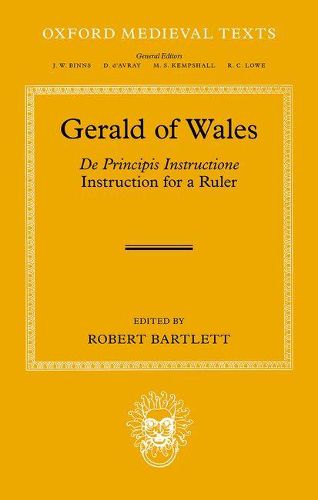Readings Newsletter
Become a Readings Member to make your shopping experience even easier.
Sign in or sign up for free!
You’re not far away from qualifying for FREE standard shipping within Australia
You’ve qualified for FREE standard shipping within Australia
The cart is loading…






Gerald of Wales was an ecclesiastic, a servant and critic of the Angevin kings, and a prolific and vitriolic writer. Born in Pembrokeshire of mixed Norman and Welsh blood in the middle years of the twelfth century, he was appointed archdeacon of Brecon in 1175, but that was the highest office he attained, despite his indefatigable efforts in the years 1198-1203 to become not merely bishop, but archbishop, of St Davids. His death was reported in 1223. His Instruction for a Ruler (De principis instructione) is of interest for three main reasons: it provides a detailed and violently partisan account of the last days of Henry II of England; it is full of miscellaneous but valuable stories and anecdotes (such as the account of the discovery of the tomb of Arthur and Guinevere, and the legend of the destruction of the Picts); and it is a monument to the literary culture of a highly educated writer at the heart of the twelfth-century Renaissance.
$9.00 standard shipping within Australia
FREE standard shipping within Australia for orders over $100.00
Express & International shipping calculated at checkout
Gerald of Wales was an ecclesiastic, a servant and critic of the Angevin kings, and a prolific and vitriolic writer. Born in Pembrokeshire of mixed Norman and Welsh blood in the middle years of the twelfth century, he was appointed archdeacon of Brecon in 1175, but that was the highest office he attained, despite his indefatigable efforts in the years 1198-1203 to become not merely bishop, but archbishop, of St Davids. His death was reported in 1223. His Instruction for a Ruler (De principis instructione) is of interest for three main reasons: it provides a detailed and violently partisan account of the last days of Henry II of England; it is full of miscellaneous but valuable stories and anecdotes (such as the account of the discovery of the tomb of Arthur and Guinevere, and the legend of the destruction of the Picts); and it is a monument to the literary culture of a highly educated writer at the heart of the twelfth-century Renaissance.